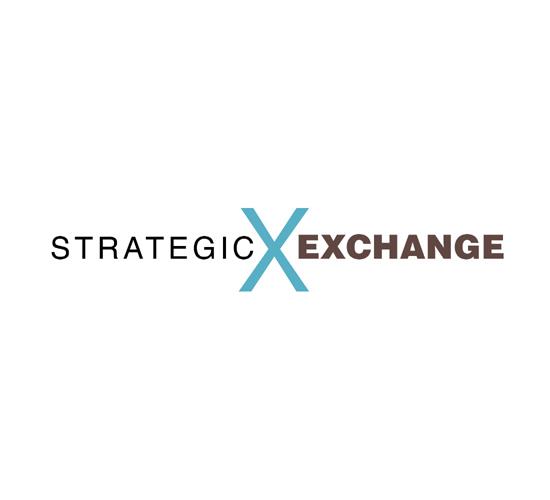Strategic Exchange: Act on fact, not speculation – April 2025
By Kemp Harr
We are in a period of flux right now. As Tim Baucom, CEO of Shaw Industries, recently told me, we’ve moved from the exuberance of December, with the presidential election behind us, to the uncertainty of April, facing the threat of inflationary tariffs.
The best course of action moving forward is to act on what we know-not on speculation. Now is a perfect time to shuffle the deck and lay plans for future growth. In late March, we learned that U.S. existing-home sales rose 4.2% in February from the prior month to a seasonally adjusted annual rate of 4.26 million. That was far better than expectations. Economists had estimated a monthly decrease of 3.2%, but instead, we saw the first month-over-month increase in two months.
Prospective homebuyers are starting to emerge from the sidelines because life is moving on, even if mortgage rates and home prices are higher than they used to be. Consumers are having babies, retiring and getting new jobs, and reality has set in that mortgage rates are going to hold steady at between 6% and 7%.
While mainstreet media would have you believe that the sky is falling, the truth is that the U.S. economy is continuing to grow. In a recent podcast, Santo Torcivia, our resident economist who focuses his analysis on the flooring markets, pointed out that the U.S. economy overall is still expanding. Consumer spending continues to grow (up 0.4% in February); core inflation (excluding food and fuel) is up only slightly (2.8%); household income is still rising (up 0.8%); unemployment is flat at 4.1%; and gasoline prices are coming down.
Just in the past week, we’ve learned that two family-owned commercial contractors are expanding in more ways than one. Chuck Bode’s CB Flooring is opening a branch in Raleigh, North Carolina, and Richard Friedman’s DFS is expanding into yet another market (location to be revealed soon). Interestingly enough, both firms have the next generation running the day-to-day, and in both these cases, the next-generation leaders just had babies. Matt Bode had a baby girl named Lila, and Josh Friedman had a baby boy named Leo. So, hopefully, the legacy for both these companies will extend for another generation.
SHAW COMMERCIAL’S ESP MEETING
Shaw invited 34 commercial contractors to Dallas in mid-March for its biennial Elite Strategic Partner’s meeting. Twelve of the companies that were invited were first-time participants. This group represents roughly $100 million in annual purchases within Shaw’s commercial business. The purpose of the meeting is to nurture the type of relationships that encourage both the dealers and Shaw to be strategic about how they grow together. As presented at the meeting, there are six necessary elements for a strong partnership: shared vision, complementary strengths, trust and transparency, strategic synergy, sustainable value creation, and, finally, adaptability and growth.
JLL DATA PRESENTED AT ESP MEETING
An informative macro-economic presentation was given at Shaw Commercial’s ESP meeting by JLL (Jones Lang LaSalle), an expert in real estate research. In 2025, the sectors that are attracting the most investment are industrial, multi-housing and “alternatives,” such as data centers and build-to-rent housing, followed by retail, office and hotel.
JLL’s latest read on the Fed’s position on rate cuts in 2025 is that there will only be two, based on the effect tariffs are going to have on inflation. Those tariffs are going to be aimed at the countries with the greatest trade imbalance with the U.S. In order, those countries are China, Mexico, Vietnam, Ireland and Germany.
Back-to-office is already a major stimulus for remodeling investments in the office market. Three years ago, 30% of workers were fully remote. Today, fully in office is 39%, and fully remote has dropped to 1%. Office buildings that command the highest rent offer rooftop terraces, natural light, outdoor break areas, fitness centers and LEED certification. But thanks to the level of vacant office space, new construction of office buildings is at an all-time low. In fact, to keep rents elevated, 20% of the country’s office space has been converted to other end-use applications.
Real estate investments in the hotel sector continue to be healthy. Since Covid, the sector has attracted $62.6 billion in investment, and the demand for rooms has fully recovered to 2019 levels. There are now 214 hotel brands, and the strength within the market is in the limited service and extended-stay “value” sector of the business, where margins are 42% versus 34% for full-service hotels.
In the retail sector, closures in 2025 are expected to exceed openings. Surprisingly, however, there is still 44.7 million square feet of retail space under construction, and total vacancy is only 4.1%. Rent rates are starting to flatten out, and new construction starts are at the lowest rate in 15 years. Remodel activity should remain strong as store closings will free up 140 million square feet of much needed retail space. Service-based space (food and beverage and fitness) is outpacing product-based space.
In conclusion, JLL admits that economic growth is increasingly difficult to forecast, but it is still calling for year-over-year GDP growth of 2% in 2025 and 2026.
If you have any comments about this month’s column, you can email me at kemp@floorfocus.com.
Copyright 2025 Floor Focus
Related Topics:Shaw Industries Group, Inc.
